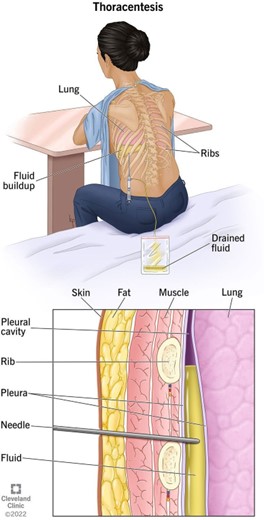A nurse is caring for several clients who are receiving well-child check-ups. The nurse should identify that the initial diphtheria, tetanus, and pertussis (DTaP) vaccine is indicated for which of the following clients?
A 2-month-old infant
A 4-month-old infant
A 6-month-old infant
A 15-month-old toddler
The Correct Answer is A
The initial diphtheria, tetanus, and pertussis (DTaP) vaccine is indicated for a 2-month-old infant. The DTaP vaccine is typically administered as a series of doses starting in infancy to provide protection against diphtheria, tetanus, and pertussis (whooping cough).
The recommended schedule for the DTaP vaccine includes a series of doses at 2, 4, and 6 months of age, with additional booster doses given later in childhood. Therefore, the first dose of DTaP is given to infants at 2 months of age.
The other options are incorrect because:
b) A 4-month-old infant: By 4 months of age, the second dose of the DTaP vaccine should be administered, not the initial dose.
c) A 6-month-old infant: By 6 months of age, the third dose of the DTaP vaccine should be administered, not the initial dose.
d) A 15-month-old toddler: By 15 months of age, the toddler would have already received multiple doses of the DTaP vaccine as part of the recommended series. The initial dose is typically given earlier, at 2 months of age.
Nursing Test Bank
Naxlex Comprehensive Predictor Exams
Related Questions
Correct Answer is C
Explanation
c. "I will have a chest x-ray following the procedure."
Explanation:
The statement that indicates an understanding of the information provided is "I will have a chest x-ray following the procedure."
Explanation for the other options:
a. "I will have general anesthesia during the procedure":
This statement is incorrect. Thoracentesis is typically performed using local anesthesia, which numbs the area where the needle will be inserted. General anesthesia, which induces a state of unconsciousness, is not usually required for this procedure.
b. "I will lie flat for 6 hours following the procedure":
This statement is incorrect. While the client may be advised to lie still for a short period after the thoracentesis, it is not necessary for them to lie flat for a full 6 hours. The specific post-procedure instructions may vary depending on the client's condition and the healthcare provider's preferences.
d. "I will breathe deeply through my nose during the procedure":
This statement is incorrect. During a thoracentesis, the client is typically asked to sit upright and lean forward to allow beter access to the space between the lungs and chest wall. They may be instructed to take slow, deep breaths and hold their breath for short periods as needed during the procedure to help maintain proper positioning and reduce the risk of complications.
In summary, the statement that demonstrates an understanding of the thoracentesis procedure is "I will have a chest x-ray following the procedure." This indicates the client's awareness of the need for a post- procedure chest x-ray to evaluate the results and ensure the absence of any complications.

Correct Answer is B
Explanation
b. A client who has hemiparesis and lives alone.
Explanation:
The correct answer is b. A client who has hemiparesis and lives alone.
An interdisciplinary care conference involves the collaboration of multiple healthcare professionals from different disciplines to develop a comprehensive care plan for a client. In this scenario, the client with hemiparesis who lives alone requires an interdisciplinary care conference because their condition and living situation present complex challenges.
Clients who had surgery for cataract removal and live in a rural location (option a) may require support with transportation and follow-up appointments, but it does not necessarily warrant an interdisciplinary care conference.
A client who requires assistance to pay for dressing supplies (option c) may benefit from financial counseling or resources, but it does not typically require the involvement of multiple healthcare professionals in a care conference.
A client who requires instruction regarding medication administration (option d) can typically receive education from a nurse or pharmacist without the need for an interdisciplinary care conference.
In contrast, the client with hemiparesis who lives alone may require input from various professionals such as physical therapists, occupational therapists, social workers, and home healthcare providers to address their physical limitations, safety concerns, and support needs. Therefore, an interdisciplinary care conference is necessary to develop a comprehensive discharge plan that addresses all aspects of their care and promotes their well-being in the community.
Whether you are a student looking to ace your exams or a practicing nurse seeking to enhance your expertise , our nursing education contents will empower you with the confidence and competence to make a difference in the lives of patients and become a respected leader in the healthcare field.
Visit Naxlex, invest in your future and unlock endless possibilities with our unparalleled nursing education contents today
Report Wrong Answer on the Current Question
Do you disagree with the answer? If yes, what is your expected answer? Explain.
Kindly be descriptive with the issue you are facing.
